GEMIGNANI

An imprint of Globe Pequot, the trade division of
The Rowman & Littlefield Publishing Group, Inc.
4501 Forbes Blvd., Ste. 200
Lanham, MD 20706
www.rowman.com
Distributed by NATIONAL BOOK NETWORK
Copyright 2022 by Margaret Hall
All rights reserved. No part of this book may be reproduced in any form or by any electronic or mechanical means, including information storage and retrieval systems, without written permission from the publisher, except by a reviewer who may quote passages in a review.
British Library Cataloguing in Publication Information available
Library of Congress Cataloging-in-Publication Data
Names: Hall, Margaret, 1997- author.
Title: Gemignani : life and lessons from Broadway and beyond / Margaret Hall.
Description: Lanham, MD : Applause Theatre & Cinema Books, 2022. | Includes index. | Summary: GEMIGNANI tells the life story of Paul Gemignani, who is widely considered to be the most successful Broadway music director living today. A frequent collaborator with Stephen Sondheim, Kander and Ebb, Michael Bennett, and the Roundabout Theater Company, Mr. Gemignani is directly entwined with the history of American musical theater itselfProvided by publisher.
Identifiers: LCCN 2021046403 (print) | LCCN 2021046404 (ebook) | ISBN 9781493061051 (cloth) | ISBN 9781493061068 (epub)
Subjects: LCSH: Gemignani, Paul. | Conductors (Music)United StatesBiography. | MusicalsProduction and directionUnited States.
Classification: LCC ML422.G433 H35 2022 (print) | LCC ML422.G433 (ebook) | DDC 784.2092 [B]dc23
LC record available at https://lccn.loc.gov/2021046403
LC ebook record available at https://lccn.loc.gov/2021046404
 The paper used in this publication meets the minimum requirements of American National Standard for Information SciencesPermanence of Paper for Printed Library Materials, ANSI/NISO Z39.48-1992.
The paper used in this publication meets the minimum requirements of American National Standard for Information SciencesPermanence of Paper for Printed Library Materials, ANSI/NISO Z39.48-1992.
Dedicated to Jennifer Ashley Tepper for paying it forward.
MH
Before you start looking for the juicy parts, I would like to pay tribute to a few magnificent humans.
First, I would like to thank all the wonderfully talented and completely undervalued members of every orchestra I have ever conducted for making me look good in whatever performance we all were involved in, be it theatre, concert, film, or recording studio.
I would like to dedicate this book to the teachers everywhere, especially the ones who used their talents and energies to guide me toward my dreams, sometimes before I even knew what those dreams were.
I dedicate this book further to Harold Prince and Stephen Sondheim for their constant support and for giving me my career.
I also dedicate it to my son, Alexander, for being the best of the best of friends and for making me proud every single day hes been on this earth. I continue this dedication to my stepson, August, who has always held me accountable and whose ambition and drive have always made me work harder to be a better stepfather. Lastly to my beautiful wife, Derin Altay, for giving me the support, love, and life I thought Id never have.
PG
C ONTENTS
Guide
I have worked with thousands of musicians over the nearly fifty years of my professional music career. Paul Gemignani is on the top of my very short, You call me, Im there list.
While claiming to be a meritocracy, professional music is often driven by politics. Bucking those games, Paul chooses his musicians based on artistry. While others betray colleagues readily in quests for power or easy bucks, Paul stands up for musicians rights. In an era of increasing mechanization, Paul fights hard and long, sometimes over years, to hire the musicians the works artistically need. Art and merit come first for him, always. He is a rare colleague who walks the walk of integrity, even when it means paying a personal price.
Paul is a rare conductor who can immediately hear the difference between an excellent player, an incompetent player, and a great player who had a bad moment. In a Broadway era largely defined by conductors who want players to sound like automatons (like the recording) Paul is the anomaly who relishes the individual artistry of every musician, including substitutes. He hears the differences in each artists voice, savors what they offer, and weaves new tapestries of sound using whoever is on hand, every performance.
He is the rare conductor who gives players what they need, when they need it. When things are going great, he gets out of everyones way. But the moment there is the slightest unraveling, he immediately reins everyone in, bringing the company back, tight, en forme.
He is playful, creating living games with actors and musicians during every show, keeping everyone fully engaged; the most effective way to combat eight-shows-a-week-boredom. He does not just do it the same every night. He knows art does not live in mindless, automatic repetition. Every performance with Paul breathes a new life, spinning new subtleties. Maybe tonight he will let a singer or musician float a bit longer on a particularly delicious note or push more forcefully through a moment of driving momentum. Infinitesimal changes that keep it all alive. There is no stagnation when Paul is at the helm.
But while savoring the details, Paul never sacrifices the whole to individual moments. Yes, he recognizes each artists voice, relishes it, lets it be heard. But he never loses track of the fact that each phrase is building a Song, which builds a Scene, which builds an Act, which builds an entire Show. He conducts in multilayered phrases, always shaping layers on layers of larger and larger phrases that build the entire work. He does not just conduct a series of numbers. Paul never loses sight of the story, and where we are within it.
Making music with Paul is a joy and highlight of my career. When he calls, I say Yes, happily. Even if I am seriously ill. Even if other life demands make it very challenging or inconvenient. Because making music with Paul is always, and absolutely, worth it.
J ENNIFER H OULT (H ARP , A NVIL , K EYBOARD )
I N THE MUSICAL THEATRE, THERE ARE FEW POSITIONS MORE ELUSIVE than that of the music directora critical piece of the creative team, they oversee the music in musical to both carry out the composers vision and collaborate with the performers onstage and in the pit to create a cohesive production. Many of the decisions regarding the score of a show are made by a music director, and they are often the member of the creative team who stays with the show furthest into its run, with composers, directors, and choreographers moving on to new projects after opening night. They regularly act as conductors for the shows on which they work, clocking in and out eight times a week alongside the performers, stagehands, and pit musicians, and they participate in the initial casting.
Their work, while incredibly important to the structure and success of a show, is regularly misunderstood by the industry at large. Considered by some to be the equivalent of a human metronome, their talent and insights can be overlooked by those who do not work with them directly. The Tony Award for Best Conductor and Musical Director was discontinued in 1964, and their efforts in the theatre have been left almost entirely unrecognized by the public ever since.


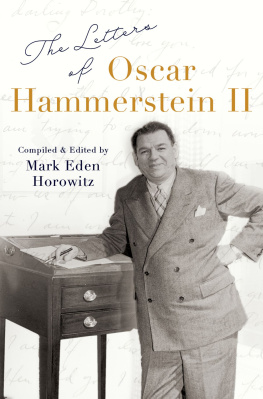
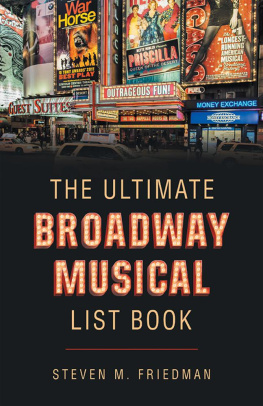
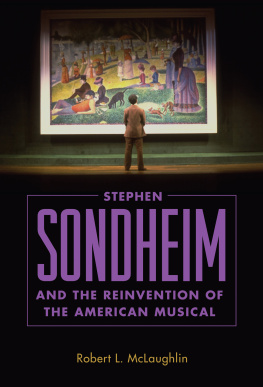
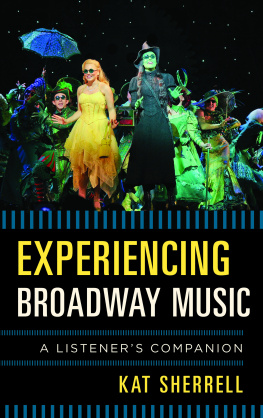
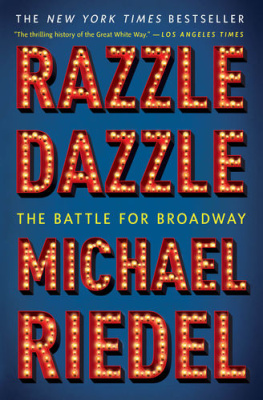
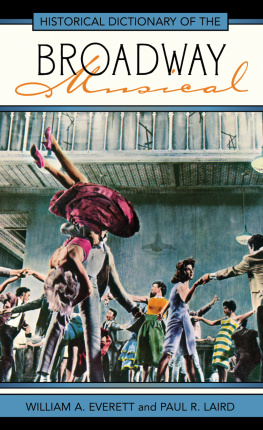



 The paper used in this publication meets the minimum requirements of American National Standard for Information SciencesPermanence of Paper for Printed Library Materials, ANSI/NISO Z39.48-1992.
The paper used in this publication meets the minimum requirements of American National Standard for Information SciencesPermanence of Paper for Printed Library Materials, ANSI/NISO Z39.48-1992.